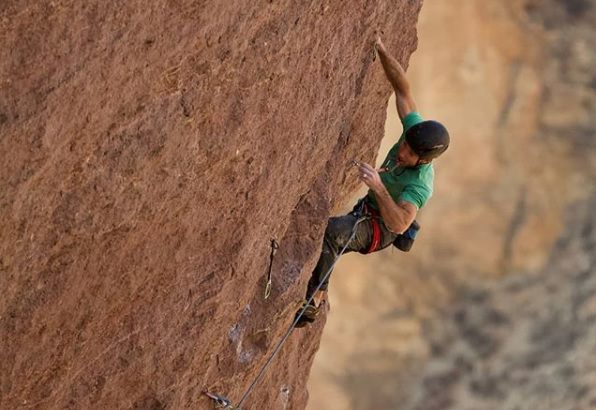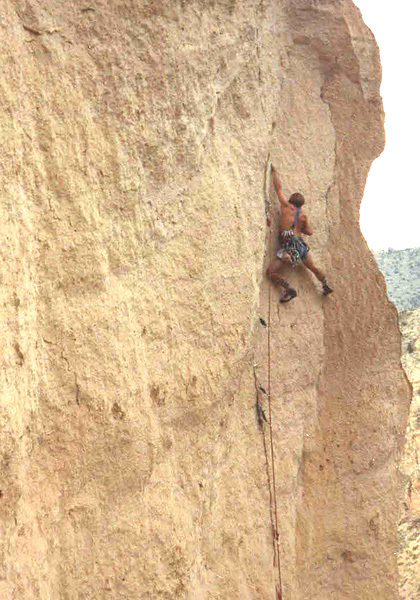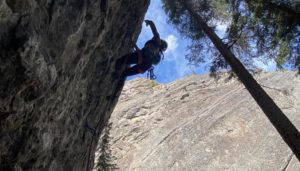Mike Doyle Trad Climbs East Face of Monkey Face 5.13d

Canadian Mike Doyle repeated the East Face of Monkey Face 5.13d in Smith Rocks while placing all of his own gear.
Doyle might be only the fourth climber to send the climb placing his gear (and third Canadian), after Sonnie Trotter, Will Stanhope and Alex Honnold.
“I skipped all the fixed gear and placed all the gear on lead, aka the Canadian variation,” said Doyle.
“It’s really kind of contrived (the bolts are in easy climbing without good gear) but just a fun mental challenge.”
The East Face is a 45-metre finger crack originally aided back in the 1960s. It was a big deal in the 1980s when Alan Watts began freeing the moves.
Trotter made the first all-gear ascent in 2004 after working on it for seven days over two weeks before the redpoint.
He skipped all of the bolts, a piton and the first-pitch anchor and place 16 pieces of gear on lead. Trotter mentioned in 2004 that it felt like 5.14 because of the difficulty of placing all of the gear.
“It was super-strenuous to stop mid-crux, on bad feet and tiny finger locks, then try to place a small nest of gear and clip the rope in with 130 feet of rope drag,” he said.
“But I wouldn’t have it any other way. I get back so much more when I climb a route with all clean gear. My list of dream climbs just got twice as big — I think 5.14 gear climbs should be the norm, and I look forward to help making that happen.”
Watts said that the East Face of Monkey Face was the hardest route at Smith before the international scene arrived at Smith Rock.

He first climbed the route in two pitches, since that’s the way the original aid climb was done. “The first pitch was 5.12c and I did it in 1983. The next year, after a whole lot of work, I freed the upper pitch, placing the gear the whole way,” Watts told Planetmountain.com in 2009 here.
“Since I had already done Grand Illusion, it was clear to me that the upper pitch was the hardest redpointed lead in the US.
“The next year I returned, doing the route in a single pitch, again without pre-placed gear. But, unfortunately, after placing every nut several times (and failing on the final bolted moves), I settled for a yo-yo ascent the day before leaving for Yosemite.”
Watts said that in some ways it was a landmark climb and in other ways it wasn’t because of the the shift to sport climbing, it wasn’t nearly as influential as the bolted routes.
In response to Trotter’s skipping Watts’s bolts, Watts said, “I soon understood that Sonnie’s avoiding the bolts wasn’t any negative reflection on my ascent.
“In an age where sport climbing dominates, it was refreshing to see someone finding a creative niche in the sport. Original thinkers always have been (and always will) be a rarity in our sport. Sonnie definitely qualifies.”
Congrats Doyle on upping the Canadian count on the East Face, not that we’re keeping score.


